Devine Test Site: Vertical Heterogeneity in the Austin Chalk
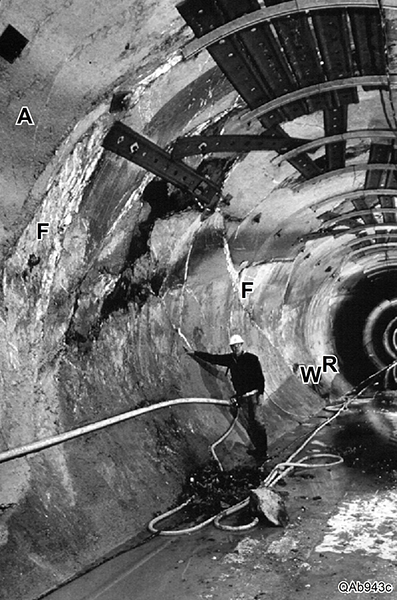
Figure 5. Complex normal fault zone in upper Lower Austin Chalk at the SSC site, showing large normal faults (F) and smaller antithetic faults (A), mainly calcite filled. Almost 70 ft of throw across this zone has been interpreted from borehole data. Rollover monocline (R) is found on the far hanging wall. Water (W) was produced from only one small (3-ft throw) fault.
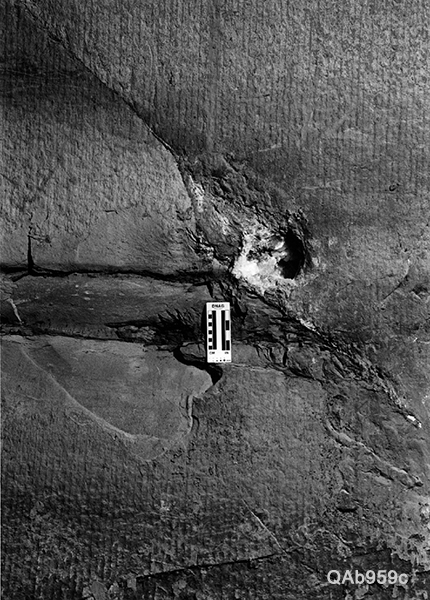
Figure 6. Small normal fault (2-ft throw) in SSC tunnel, with changes in dip caused by variations in chalk composition. Lower dips occur in strata containing or composed entirely of marl. Note expansion of marly chalk into the fault aperture.
Structural heterogeneity is probably the main factor at the Devine Test Site. Structural vertical heterogeneity in Austin Chalk is caused by detachment along steep (average 60° dip) normal faults and by associated features such as fault breccia, marl smears, and rollover monoclines (Figures 5 and 6) and horizontal stylolites.
Actual dip along continuous fault surfaces varies such that steeper dips (locally, up to nearly vertical) occur in purer chalk, whereas flatter dips (as low as 30°) occur in marls (Figure 7).
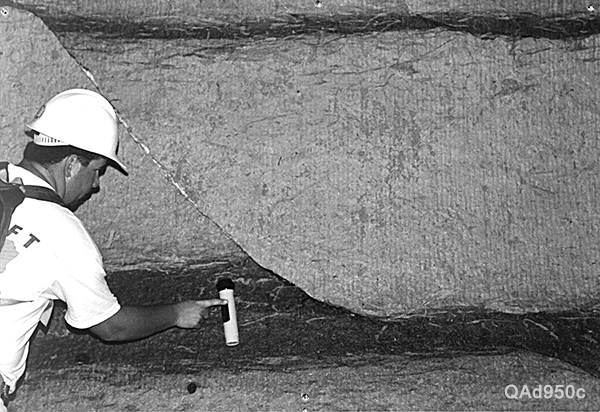
Figure 7. Small normal fault (0.5-ft throw) in lower Lower Austin Chalk, with steep and listric segments that reflect lithologic variation between chalk and marl.
Some faults have steep and listric segments, responding to lithologic variations (Figure 8). Some larger faults at the SSC have been interpreted from seismic data and well data to become listric in the Eagle Ford Shale, which underlies the Austin Chalk (The Earth Technology Corporation, 1989).
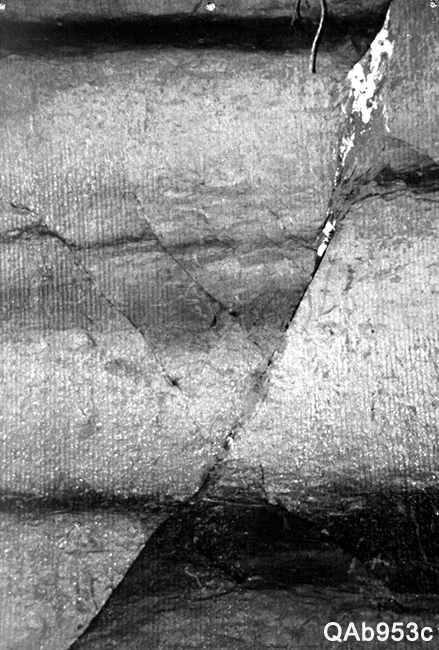
Figure 8. Small (1-inch throw) antithetic faults located between bends in larger associated faults. Additional space created along fault surface is filled with calcite.
Faults occur individually or in widely spaced (hundreds to thousands of feet) clusters of 2 to 10, or more, fractures. Small antithetic faults often are concentrated near bends in their associated larger faults (Figure 9), which is a common development in other extensional terranes (for example, see Laubach and others, 1992). Faults may be open, locally mineral filled with calcite, or totally mineral filled. Fracture-related water production is local at the SSC site and may be restricted to a single fault within a larger fault cluster (Figures 6 and 10). The low probability of intercepting widely spaced high-angle faults with vertical boreholes is an accepted fact.
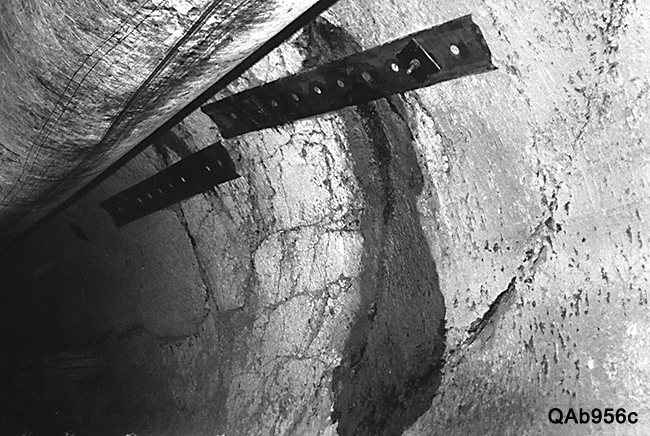
Figure 9. Cluster of small intersecting normal faults in SSC tunnel with water production restricted to one fault.

Figure 10. Submarine channel in lower Lower Austin Chalk, SSC tunnel. Channel is also shown in background of Figure 4. Approximate width of channel is 125 ft. Note inch-scale laminations of chalk and marl in channel fill.
Sedimentological vertical heterogeneity at the bed scale (0.1 to 6 ft) is caused by interbedding of large-scale (3 to 4 ft), brittle, relatively pure chalk layers that have small scale (0.1 to 1 ft), ductile, marl-dominated layers (Figure 5). Even so-called pure chalk beds may include a marl admix that is more concentrated in the upper or lower parts of the bed (Figure 7). At the intrabed scale (<1 inch), vertical heterogeneity is caused in some intervals by vertical variations in sediment texture. When not churned by burrowing organisms (bioturbation), this process forms fine laminae (Figure 11, below).
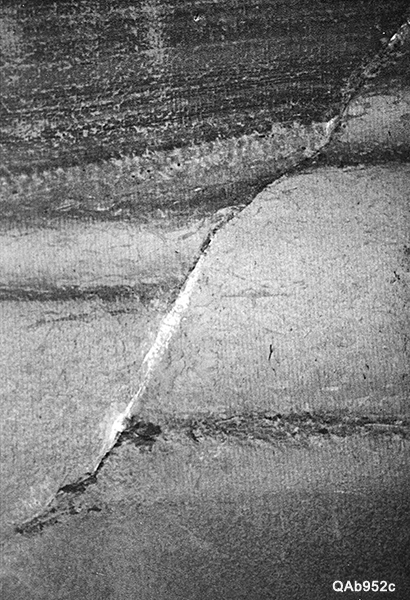
Figure 11. Association of partially mineralized (calcite) normal fault and submarine channel (upper left of fault) is the cause of complex local heterogeneity in this section of lower Lower Austin Chalk.
Distribution of primary porosity and attendant diagenetic effects such as calcite cementation or dissolution may then be texturally influenced (Hovorka and Nance, 1994). Flatlying pelecypod fragments also contribute to vertical heterogeneity in Austin Chalk. Responding to this vertical heterogeneity, vertical permeability in unfractured carbonate rocks is generally lower than horizontal permeability, on the basis of whole-core analyses. Bed-scale (>0.5 ft) vertical heterogeneity is generally detectable using high-resolution well logs. Structural and sedimentological heterogeneities at several scales in the Austin Chalk are locally compounded (Figure 12).
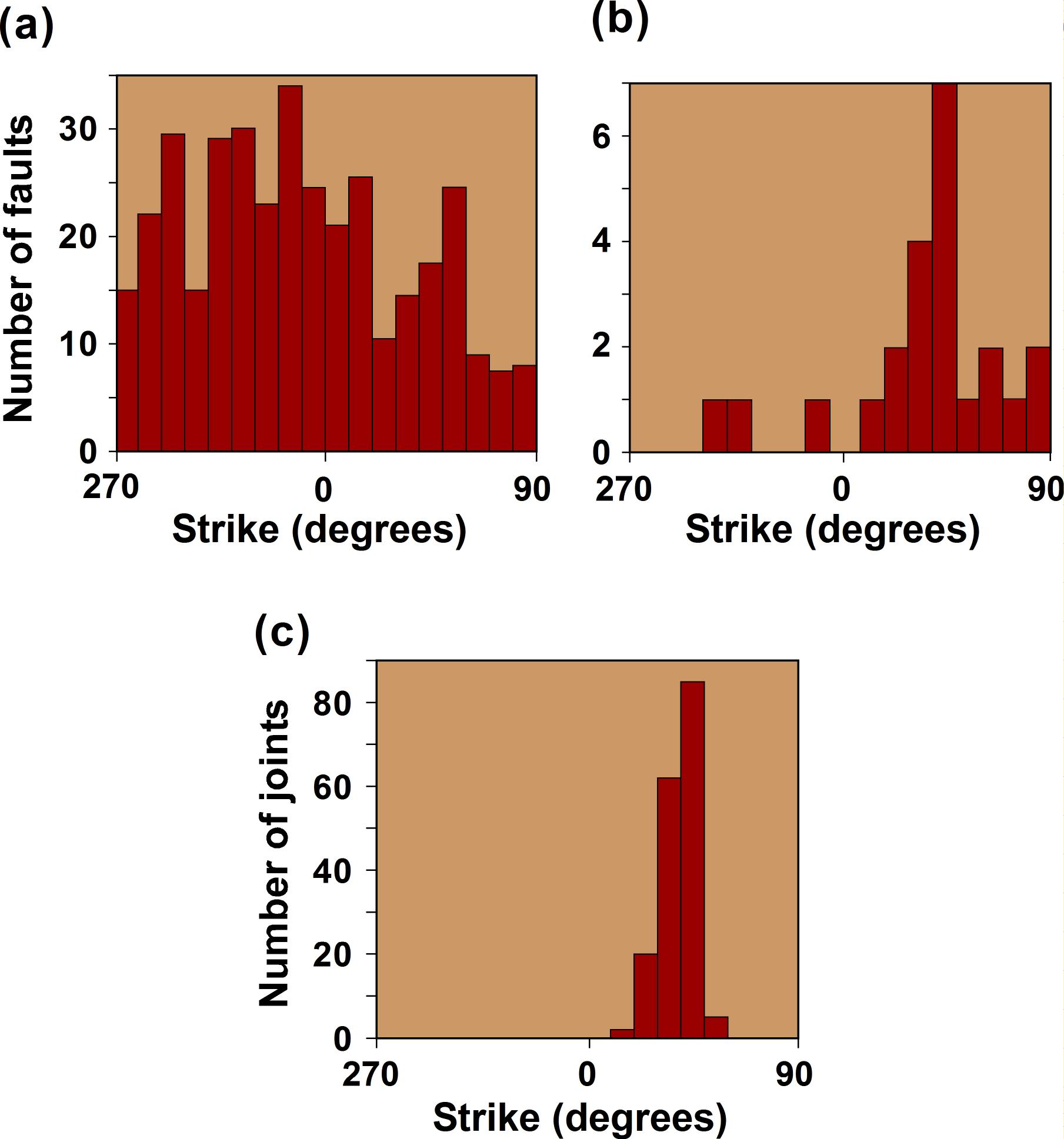
Figure 12. (a) Frequency histogram of fault strikes, SSC tunnel. Dominant strike is approximately northwest, or subnormal to the dominant trend of the Balcones Fault Zone. Compare with (b) northeast strikes of major faults (throw >20 ft) mapped at the surface. (c) Frequency histogram of joint strikes, SSC tunnel. Joint strikes, tightly clustered toward the northeast, are parallel to the dominant structural trend of the Balcones Fault Zone.